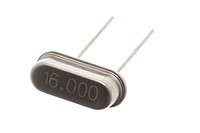
Photo from wikipedia
Abstract Many engineering applications involve slender tubular structures subjected to potentially harmful vibrations that must be damped to sustain the working life of the system. This research takes recent experimental… Click to show full abstract
Abstract Many engineering applications involve slender tubular structures subjected to potentially harmful vibrations that must be damped to sustain the working life of the system. This research takes recent experimental observations involving cylindrical metamaterials, ideal for such tubular structures, and uncovers the precise working mechanisms that trigger broadband vibration damping when embedded into cylindrical structural systems. An analytical model of the viscoelastic inclusions is first enhanced, drawing in part from recent studies. Then a new optimization approach is established based on a genetic algorithm. Following verification by finite element simulations and validation by experimental data, the optimized inclusions are scrutinized for the characteristics that culminate in exceptional damping of the host tube vibrations. The frequencies at which broadband vibration damping is achieved are found to coincide closely with the lowest order eigenfrequencies related to eigenmodes involving translational motion of the metamaterial core layer. The Young’s modulus of annular and radially arrayed beam layers of the metamaterial is discovered to mostly influence frequency band where such modes occur, and a straightforward expression for the eigenfrequency relationships is uncovered. The design parameter relations and influences on the metamaterial response uncovered in this work help guide metamaterial formulations that maximize vibration attenuation of tubular structures.
Journal Title: Journal of Sound and Vibration
Year Published: 2019
Link to full text (if available)
Share on Social Media: Sign Up to like & get
recommendations!